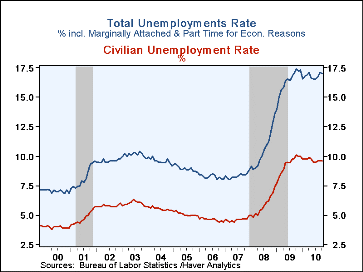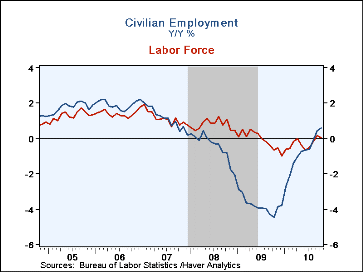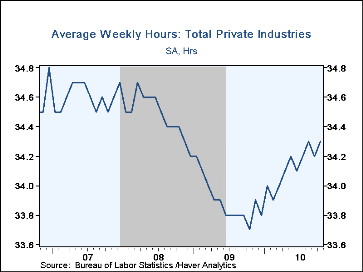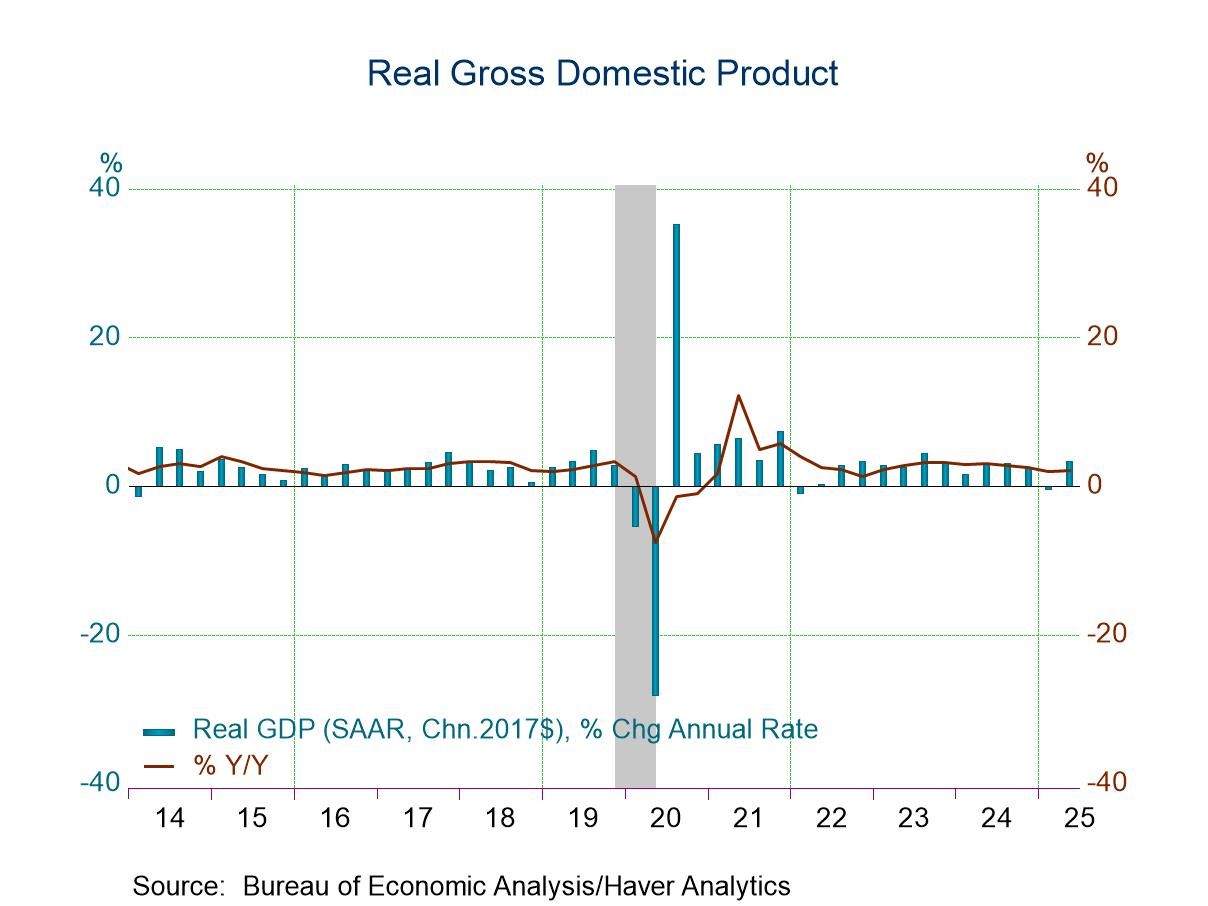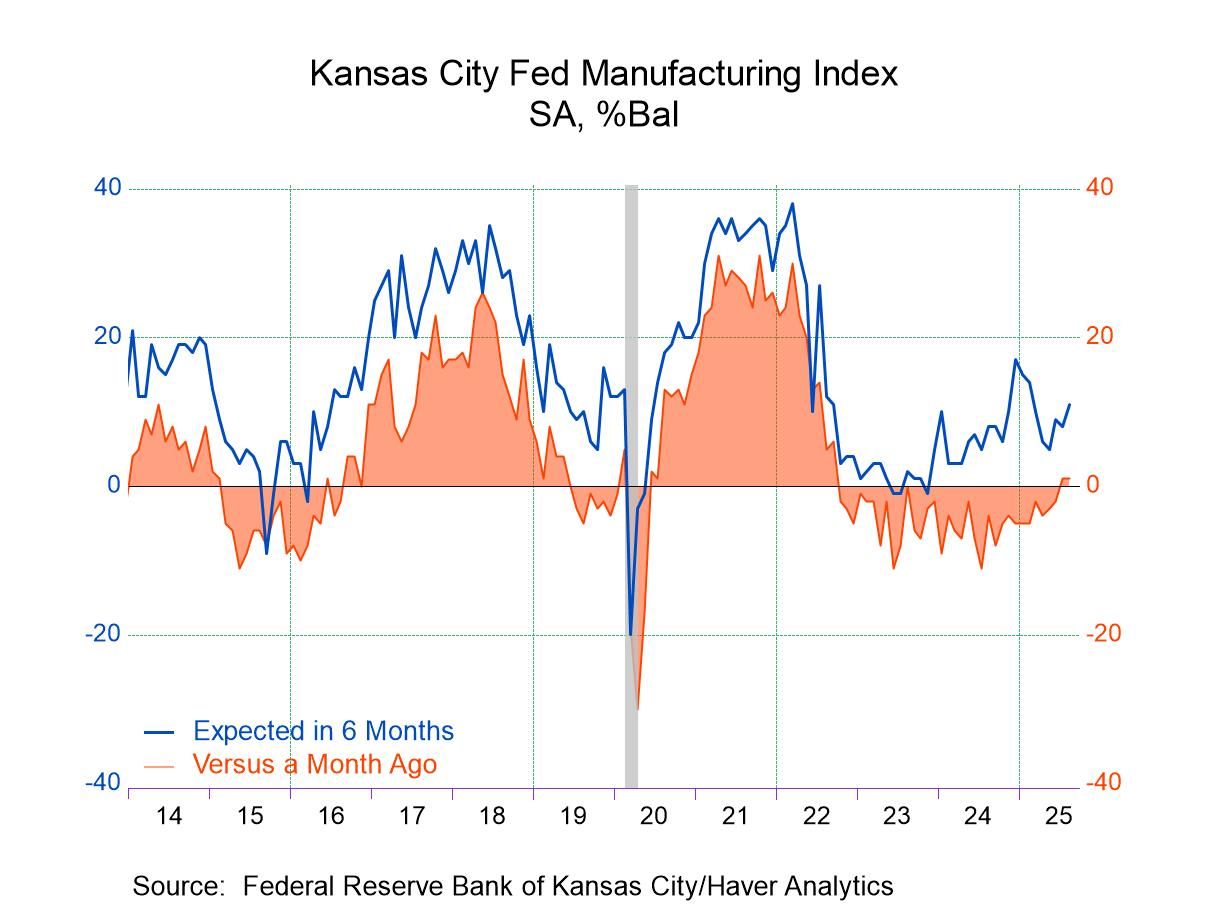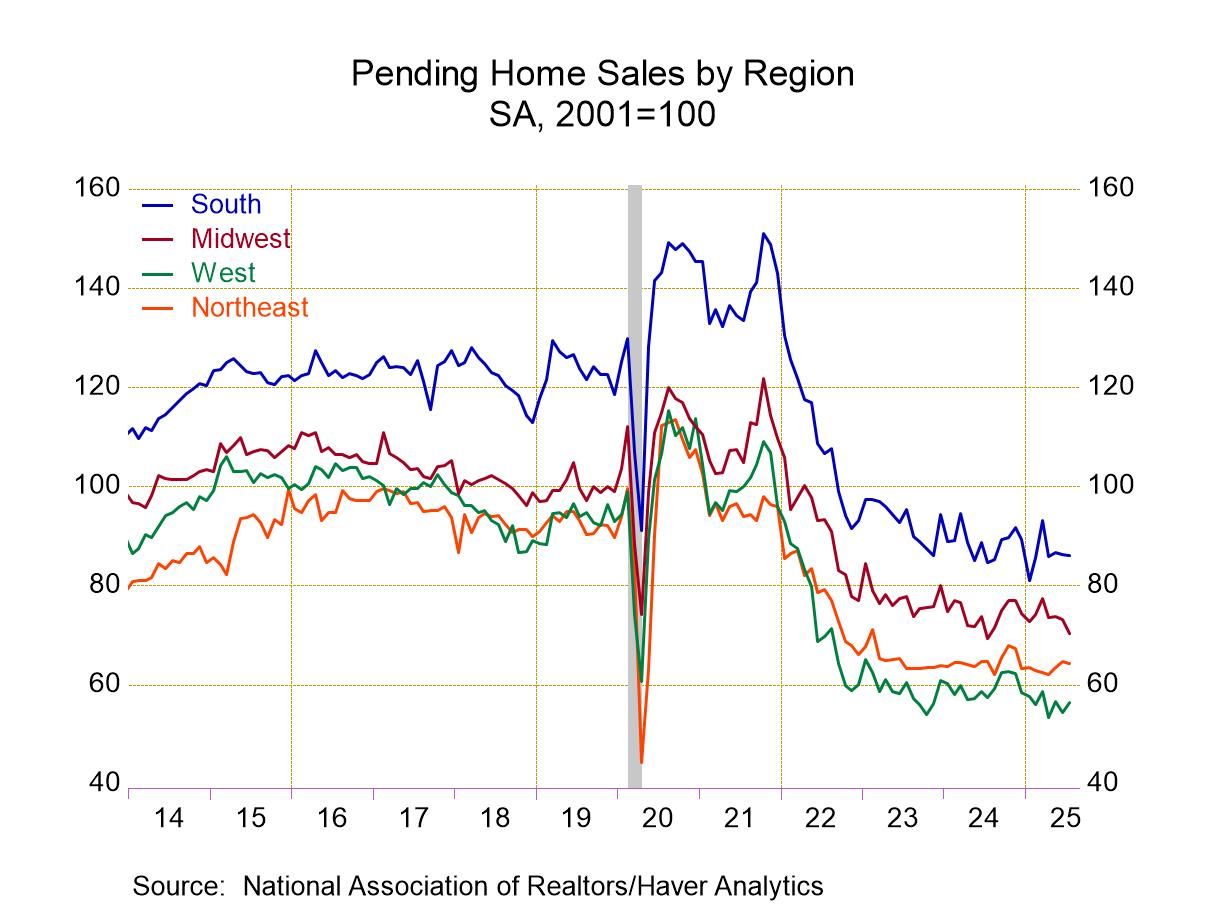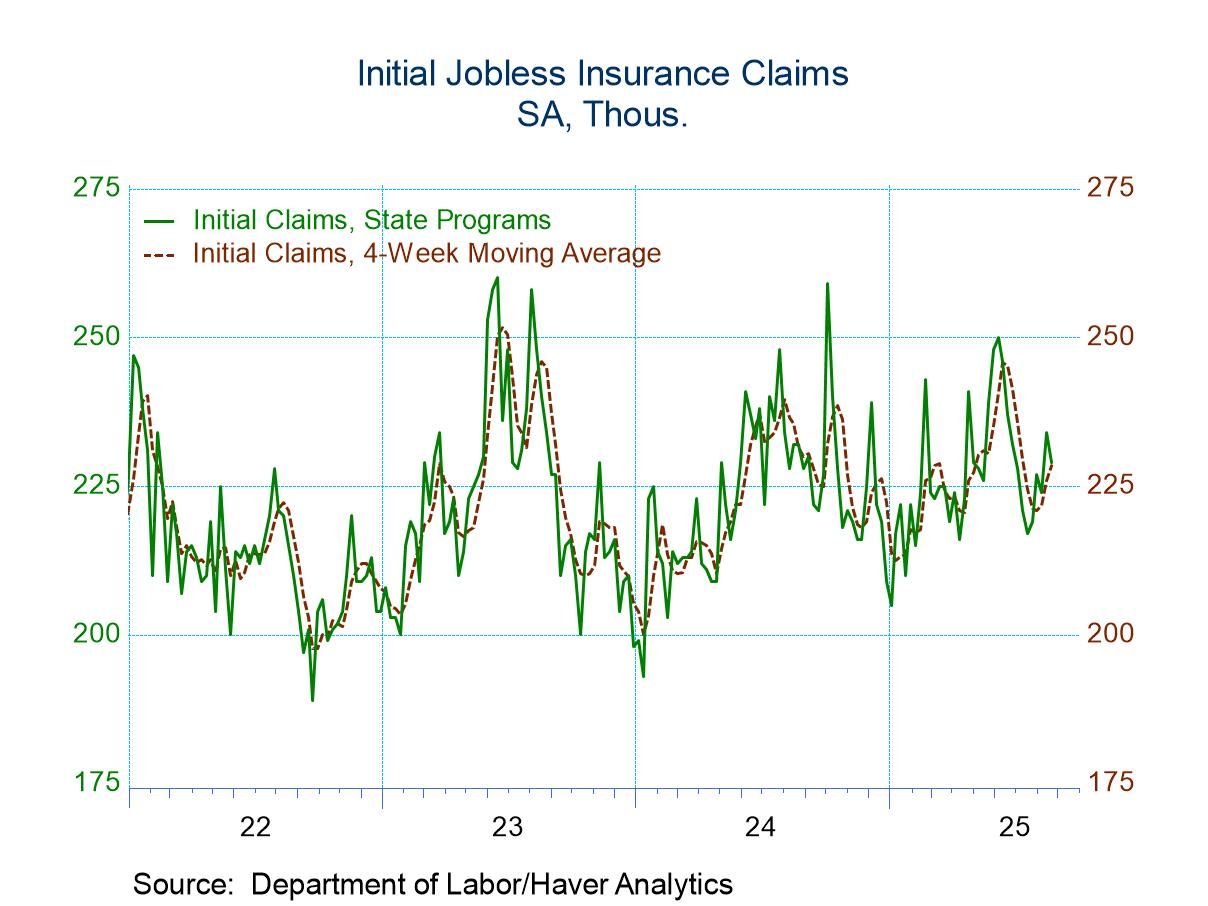 Global| Nov 05 2010
Global| Nov 05 2010U.S. Payrolls Rise Modestly; Jobless Rate Steady
by:Tom Moeller
|in:Economy in Brief
Summary
The U.S. labor market is firmer, but still fragile. Payrolls rose a modest 151,000 last month after a 41,000 September decline. Encouraging news came from private sector payrolls. They rose 159,000 after gains of 107,000 and 143,000 [...]
The U.S. labor market is firmer, but still fragile. Payrolls rose a modest 151,000 last month after a 41,000 September decline. Encouraging news came from private sector payrolls. They rose 159,000 after gains of 107,000 and 143,000 during the prior two months. Fragility, however, remains the operative word since total employment rose just 0.6% y/y, accompanied by a still-high unemployment rate of 9.6%.
Amongst sectors, it's been private service-sector payrolls which have
improved the most.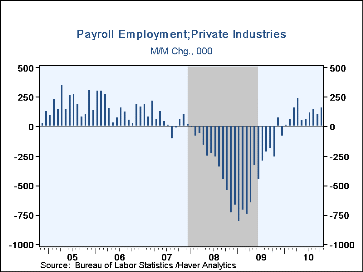 They rose 154,000 last month and they're up a still- modest 1.1% since
December following the 3.4% 2009 decline.
Payrolls in the professional & business service industries industries were
the strongest with a 1.9% YTD gain followed by education (1.8%), leisure &
hospitality (1.4%), retail trade (0.9%) and transportation (0.7%). To the
downside so far this year were the information (-1.2%) and financial services
(-1.1%) industries. All of the gains were outpaced by a 13.8% increase in
temporary help employment. In the government sector, payrolls have fallen 1.1%
this year led by a 1.7% decline in local area employment. Elsewhere, factory
sector payrolls have improved 1.2% since December but construction jobs fell
1.2%. In the private sector, 55.0% of industries raised employment.
They rose 154,000 last month and they're up a still- modest 1.1% since
December following the 3.4% 2009 decline.
Payrolls in the professional & business service industries industries were
the strongest with a 1.9% YTD gain followed by education (1.8%), leisure &
hospitality (1.4%), retail trade (0.9%) and transportation (0.7%). To the
downside so far this year were the information (-1.2%) and financial services
(-1.1%) industries. All of the gains were outpaced by a 13.8% increase in
temporary help employment. In the government sector, payrolls have fallen 1.1%
this year led by a 1.7% decline in local area employment. Elsewhere, factory
sector payrolls have improved 1.2% since December but construction jobs fell
1.2%. In the private sector, 55.0% of industries raised employment.
Overall, individuals worked a slightly longer 34.3 hour workweek, the highest in nearly two years. This was improved from last year's monthly low of 33.7 hours. The 40.3 hour factory sector workweek was the longest compared to a 33.3 hour week in the private service sector.
The payroll employment gains were accompanied by a 330,000 (+0.6% y/y) decline in household sector employment. That left the unemployment stable at 9.6% as the labor force declined by 254,000 and it's been unchanged y/y. The labor force participation rate fell to 64.5%, the lowest since 1985. More than six million individuals are currently not in the labor force but want a job. The average duration of unemployment was near its high at 33.9 weeks. Labor-market underutilization was further evident in the 17.0% of workers who were either unemployed, "marginally" attached or involuntarily employed part-time.
The figures referenced above are available in Haver's USECON database. Additional detail can be found in the LABOR and in the EMPL databases.
Economic Recovery Is Proceeding At A Slow Pace from the Federal Reserve Bank of San Francisco and it can be found here.
| Employment: 000s | Oct. | Sept. | Aug. | Y/Y | 2009 | 2008 | 2007 |
|---|---|---|---|---|---|---|---|
| Payroll Employment | 151 | -41 | -1 | 0.6% | -4.3% | -0.6% | 1.1% |
| Previous | -- | -95 | -57 | -- | -- | -- | -- |
| Manufacturing | -7 | -2 | -26 | 0.8% | -11.3% | -3.4% | -2.0% |
| Construction | 5 | -8 | 34 | -2.1% | -15.7% | -6.1% | -0.8% |
| Private Service Producing | 154 | 111 | 126 | 1.2% | -3.4% | -0.2% | 1.7% |
| Government | -8 | -148 | -144 | -1.2% | 0.2% | 1.3% | 1.1% |
| Average Weekly Hours | 34.3 | 34.2 | 34.3 | 33.7 (Oct. '09) |
33.1 | 33.6 | 33.8 |
| Average Hourly Earnings | 0.4% | 0.1% | 0.3% | 2.1% | 3.0% | 3.8% | 4.0% |
| Unemployment Rate (%) | 9.6 | 9.6 | 9.6 | 10.1 (Oct.'09) | 9.3 | 5.8 | 4.6 |
Tom Moeller
AuthorMore in Author Profile »Prior to joining Haver Analytics in 2000, Mr. Moeller worked as the Economist at Chancellor Capital Management from 1985 to 1999. There, he developed comprehensive economic forecasts and interpreted economic data for equity and fixed income portfolio managers. Also at Chancellor, Mr. Moeller worked as an equity analyst and was responsible for researching and rating companies in the economically sensitive automobile and housing industries for investment in Chancellor’s equity portfolio. Prior to joining Chancellor, Mr. Moeller was an Economist at Citibank from 1979 to 1984. He also analyzed pricing behavior in the metals industry for the Council on Wage and Price Stability in Washington, D.C. In 1999, Mr. Moeller received the award for most accurate forecast from the Forecasters' Club of New York. From 1990 to 1992 he was President of the New York Association for Business Economists. Mr. Moeller earned an M.B.A. in Finance from Fordham University, where he graduated in 1987. He holds a Bachelor of Arts in Economics from George Washington University.


